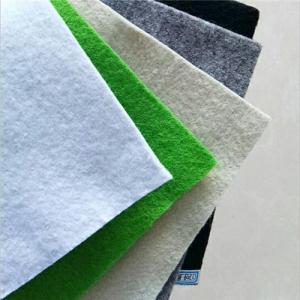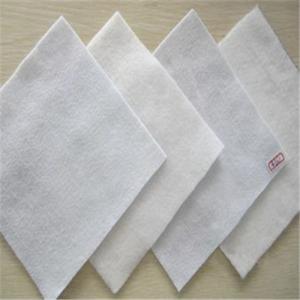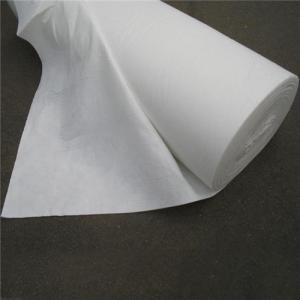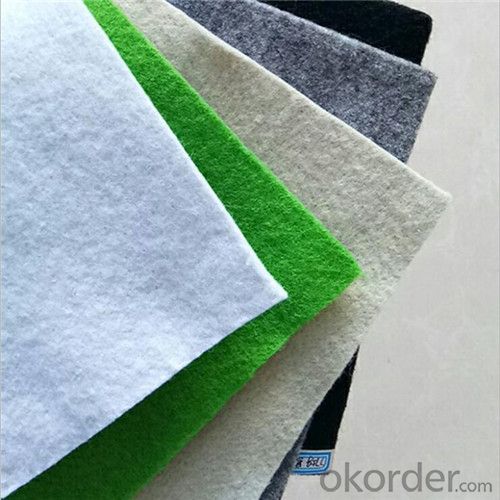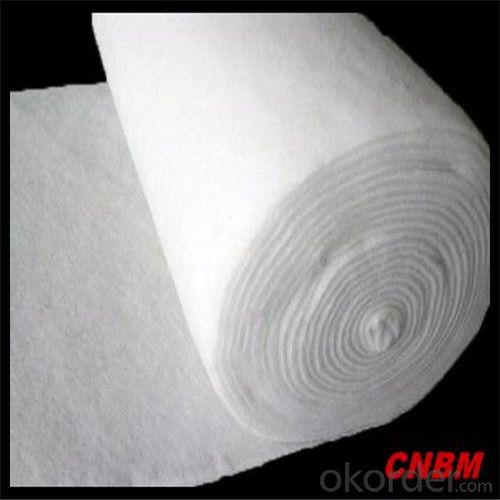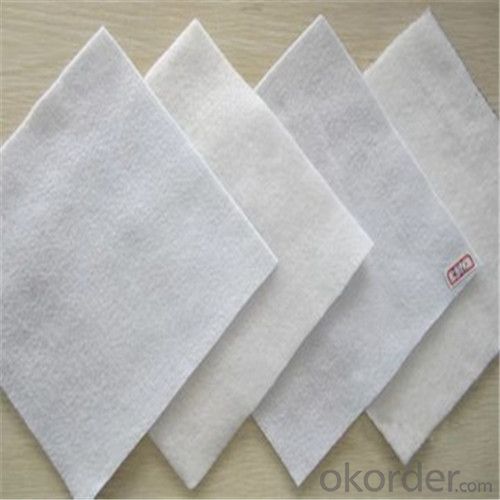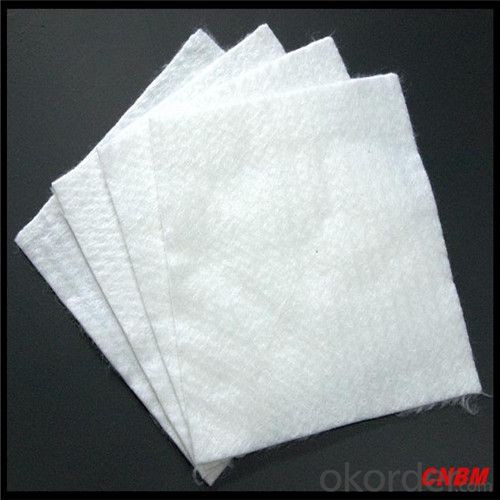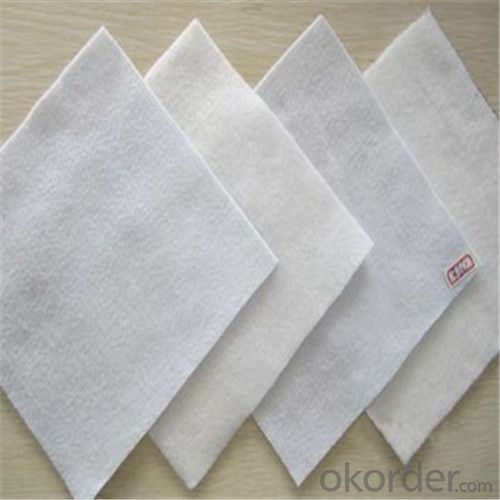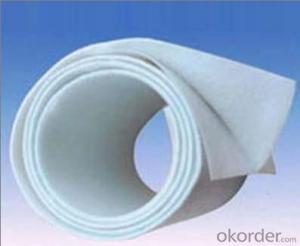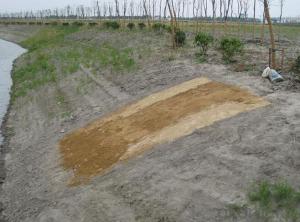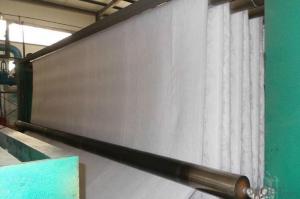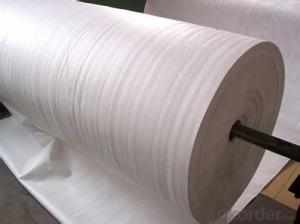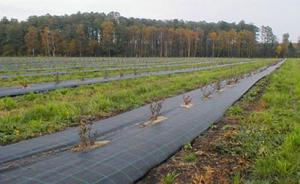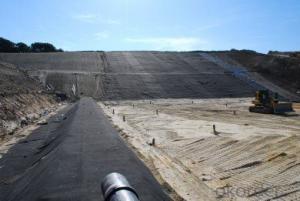Polypropylene Non-woven Geotextile or Non Woven Fabric
- Loading Port:
- China main port
- Payment Terms:
- TT or LC
- Min Order Qty:
- 2000 m²
- Supply Capability:
- 1000000 m²/month
OKorder Service Pledge
OKorder Financial Service
You Might Also Like
Specification
Polypropylene Non-woven Geotextile Function:
Effectively spreading,delivering or resolving the concentrated stress to protect the soil from the damage by external force.
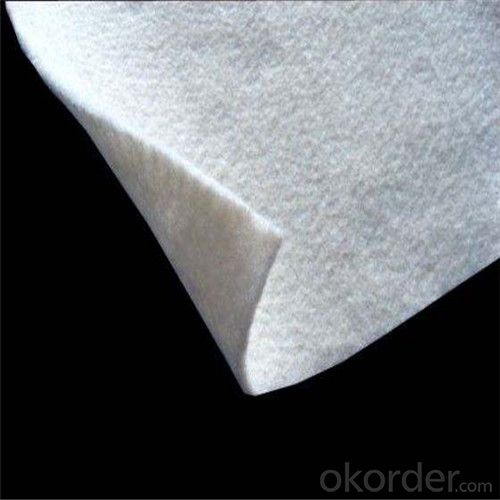
Polypropylene Non-woven Geotextile Application:
The geotextile form impermeable layer inside the soil layer in conjunction with other material (primarily asphalt or plastic film)[mainly used for road,resurfacing,repairing.etc.
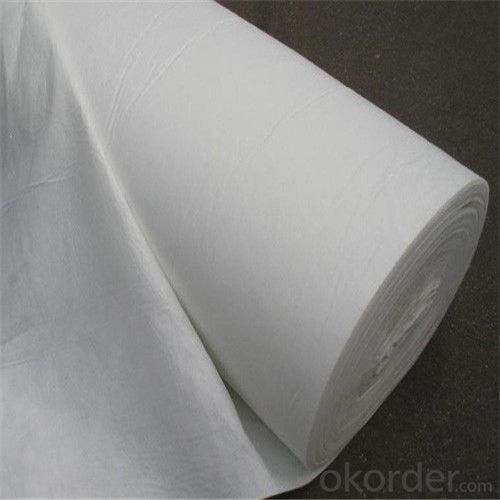
Polypropylene Non-woven Geotextile Application Features:
Can self-seal small cracks while forming watertight laps at the seams.
Provides a strong mechanical bond to poured concrete.
Proven effective in structures under continuous or intermittent hydrostatic pressure-up to 70m (231 ft).
Can be installed in virtually any weather condition, including freezing temperatures and damp conditions. Can be installed on green concrete without primers or adhesives.
Proven effective in both vertical and horizontal applications-i.e., backfilled and property-line walls.

Polypropylene Non-woven Geotextile Packaging & Shipping:
Packing: Plastic Film or Woven bag;
Shipping: About 15 days after receipt the deposit
Polypropylene Non-woven Geotextile Quality Assurance:
1.On a regular basis or as per your request,we entrust national testing agencies to conduct quality inspections
2. Strictly in accordance with the ISO9001-2008 international quality system standard,we monitor and manage the whole process throughout production,quality testing,and measurement to ensure product quality
3. For quality-related construction delay or substandard construction(except for damage or losses due to customer’s responsibility or irresistible natural disasters),we have refunding,replacement,and repair services.We will respond to customers’ feedbacks on quality issues within 24 hours.
- Q: In ANSYS, geotextile what unit to simulate it?
- I am now doing geotextile simulation, before someone with shell63, I now use, but the shell and the physical contact I did a long time. The
- Q: Acupuncture geotextile is divided into several kinds of how is it used?
- Acupuncture geotextile is now divided into two types, according to the fiber form to points. Continuous fiber called filament acupuncture non-woven geotextile. A few centimeters of length fibers made of staple fibers for nonwoven geotextiles. Use is not used, mainly used in geotechnical engineering in the filter, isolation, drainage and so on.
- Q: How are geotextiles used in civil engineering?
- Geotextiles are extensively used in civil engineering as a versatile material for various applications. They are commonly employed for soil stabilization, erosion control, drainage management, and reinforcement purposes. Geotextiles can be installed to prevent soil erosion on slopes, act as a separation barrier between different soil layers, provide filtration in drainage systems, and enhance the strength of embankments or roads. Their permeable nature allows for water and gas flow while effectively retaining soil particles, making them an essential component in many civil engineering projects.
- Q: What is PAG in PAG composite geotextile
- Should be a high-strength glass fiber or grille and non-woven woven or bonded together geotextile, PAG is estimated that the product is a product code, one may be nominal vertical and horizontal strong, similar geogrid Such as PAG50-160, the other may be used cloth and grille specifications, such as 50kn grille and 160 grams of nonwovens
- Q: What is the geotextile material?
- Geotextile is made of staple fiber polyester, polypropylene, polyester filament, PP flat silk and other synthetic fibers through acupuncture or weaving made of geotextile, non-woven and industrial non-woven products in one. The general width of 1-6 meters, roll length of 50-100 meters, the quality per unit area of 100-600 grams square meters. According to the different production processes are: polyester / polypropylene staple acupuncture geotextile, PP flat wire woven geotextile, polyester spunbond filament geotextile, single double-sided thermal composite impermeable geotextile, woven geotextile and so on.
- Q: Are geotextiles suitable for use in geotextile tube dewatering systems?
- Yes, geotextiles are suitable for use in geotextile tube dewatering systems. Geotextiles are commonly used in these systems to provide filtration and separation of water from solids. They allow water to pass through while retaining the solids, making them an effective solution for dewatering and sediment containment projects.
- Q: What is the role of geotextiles in geotechnical engineering?
- Geotextiles play a crucial role in geotechnical engineering as they are used to enhance the performance and stability of soil structures. They act as a barrier to prevent soil erosion, provide filtration to separate different soil layers, and increase the strength and stability of the soil. Additionally, geotextiles can also be used for drainage purposes, allowing water to flow through the soil while preventing the loss of fine particles. Overall, geotextiles are essential in geotechnical engineering for improving the overall effectiveness and longevity of various soil-based structures.
- Q: Are geotextiles suitable for use in geocell retaining walls?
- Yes, geotextiles are suitable for use in geocell retaining walls. Geotextiles help in enhancing the structural stability of the geocell walls by providing soil confinement, filtration, and erosion control. They prevent soil migration, improve drainage, and increase load-bearing capacity, making geotextiles an ideal choice for reinforcing geocell retaining walls.
- Q: What are the different weight options available for geotextiles?
- Geotextiles are available in a range of weight options, typically measured in grams per square meter (gsm). Some common weight options include 100 gsm, 200 gsm, 300 gsm, and 400 gsm. The choice of weight depends on the specific application and the required strength and durability of the geotextile.
- Q: Can geotextiles be used for filtration of contaminants in water?
- Yes, geotextiles can be used for filtration of contaminants in water. Geotextiles are permeable fabrics that can effectively filter out suspended particles, sediments, and pollutants from water. They are commonly used in various applications such as wastewater treatment, erosion control, and geotechnical engineering to improve water quality by removing contaminants through filtration.
Send your message to us
Polypropylene Non-woven Geotextile or Non Woven Fabric
- Loading Port:
- China main port
- Payment Terms:
- TT or LC
- Min Order Qty:
- 2000 m²
- Supply Capability:
- 1000000 m²/month
OKorder Service Pledge
OKorder Financial Service
Similar products
Hot products
Hot Searches
Related keywords
